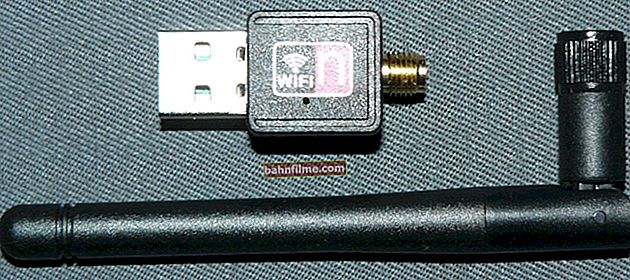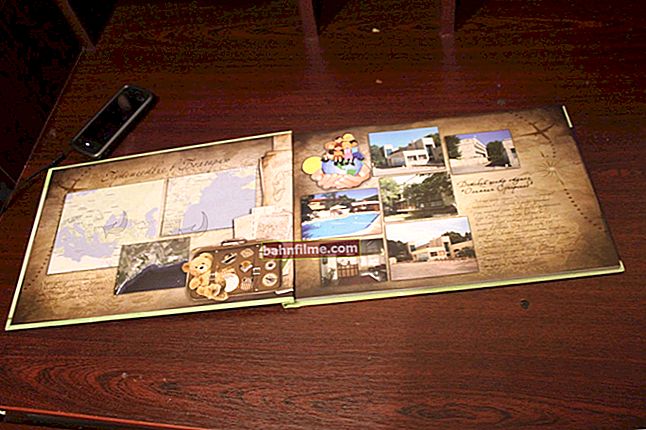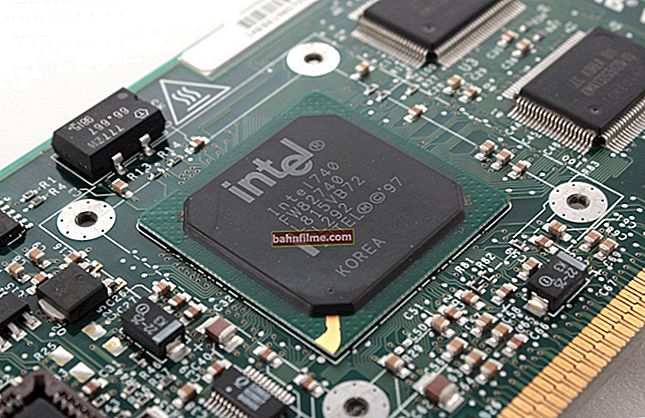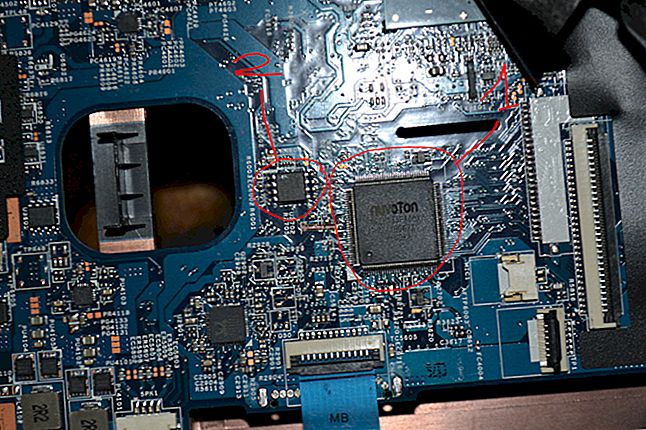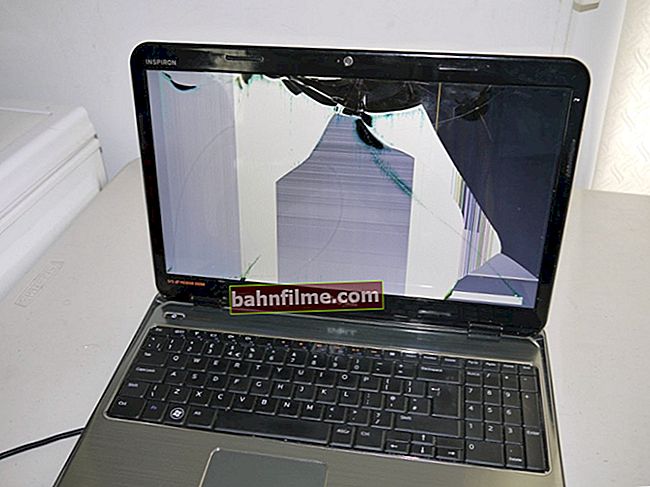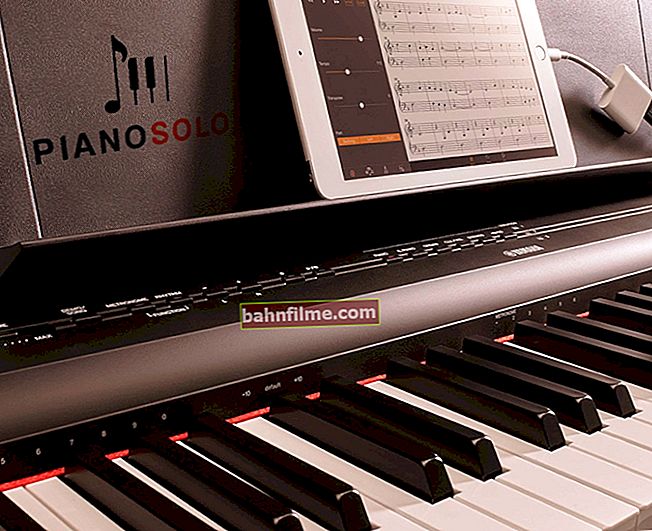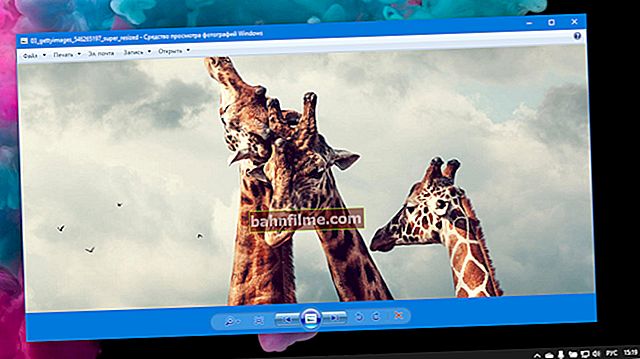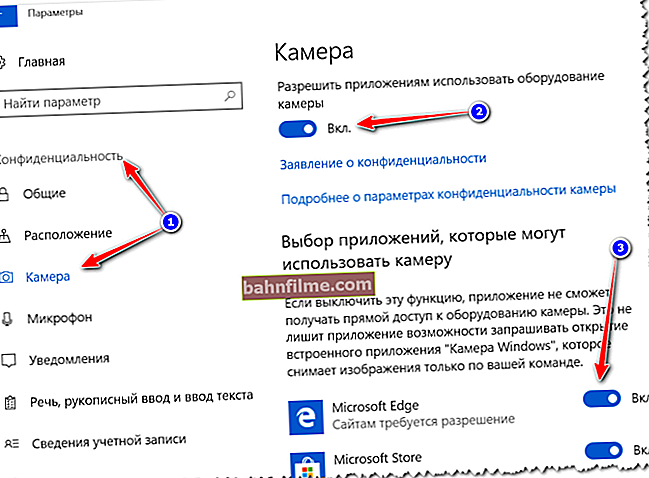 Hello.
Hello.
One of the rather popular problems on PCs and laptops is the sudden disconnection of USB ports (i.e. everything seemed to be OK a couple of days ago - but now the computer simply does not see the connected device).
By the way, in addition to simple invisibility, errors of the form: "USB device not recognized", "An unknown device is connected to USB", etc. may begin to appear.
Well, without USB (not for me to tell you) - neither there, nor here, because this interface is one of the most popular today, almost all peripheral equipment (keyboard, scanner, printer, etc.) is connected to it ...
Actually, in this post I have shared several recommendations that in most cases will help to eliminate this problem (of course, in cases where the hardware of the device is in order). If the controller is out of order or there is a fur. damage - here, except for the workshop (with a soldering iron) and replacing the damaged part, no one will help you.
And so, let's get down to business ...
*
If USB Ports Stop Working: First Steps
Clarify whether the cable is intact and whether the connected device itself is working
I start many of my articles with the simplest and most obvious advice, and this one will not be an exception.
1) If this is your first time encountering a problem, try simply restarting your computer (this is especially true if it was previously in "sleep" or "hibernation" mode). Errors related to drivers, device detection, etc. are quite often eliminated in such a simple way ...
2) Check if the cable (if used) that you connect the device to is intact. Often, due to twists, if not used carefully, the copper veins inside the cable can be damaged (it is recommended to check it on another device).

The cable is bent (twisted)
3) Check if the connected device is in order (if it is out of order).
4) If you connect a device to USB on the front panel of the system unit, try using the ports on the rear panel (often the front panel is not connected, or it malfunctions). In general, exclude any "adapters" between the USB port and the device (such as any ports on the keyboard, splitters, docking stations, etc.).

Front USB ports are often not plugged in at all ...
5) By the way, if because of the USB ports you cannot use the keyboard, try connecting it to the PS2 ports (if available ...). Even a USB keyboard can be connected to them using a small adapter (available in many computer stores).

USB to PS / 2 adapter
Reset BIOS settings
The second point that I recommend paying attention to is the BIOS settings. The fact is that in a number of BIOS versions, you can disable USB operation (completely!).
Usually, the parameter responsible for the USB operation is called as "USB Controller" , and for the ports to work - it must be in the mode "Enabled" (i.e. enabled). See the example in the screenshot below.
To help!
How to enter BIOS and change settings in it: //ocomp.info/kak-voyti-v-bios.html

Are USB ports enabled in BIOS
By the way, if you could not find this parameter, you can simply reset the BIOS / UEFI settings to the default (factory) settings - the USB ports should work in them. How to do this will be explained in the article, the link to which is given below.
To help!
How to reset BIOS settings - //ocomp.info/kak-sbrosit-nastroyki-bios.html
Check for a driver for a USB controller
For this we need a device manager.
1) To open it - press Win + R, and in the window that appears, enter the command devmgmt.msc .
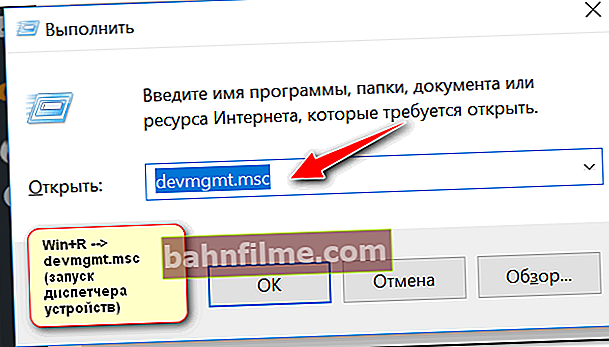
Launching Device Manager - devmgmt.msc
Next, pay attention to whether you have devices with exclamation marks in yellow (this signals that there are no drivers in the system). Usually, such devices are located in the tab "Other devices" .

How the device will look in the task manager for which there is no driver
Then click on the button "Update hardware configuration" (a kind of analogue of rebooting a PC).
For automatic driver update: //ocomp.info/update-drivers.html#i

Update hardware configuration
2) If there are no devices with exclamation yellow marks in the manager, I recommend further checking if there have been any updates. It is convenient to do this using Driver Booster (the utility will automatically find drivers for your controllers, see the screen below).

Driver Booster - search for drivers
If the drivers are found, check the boxes for the required devices and update them.
3) In some cases, it is possible to "get" USB ports to work by uninstalling their driver in Device Manager.
Important! When removing controllers from the device manager, all USBs (including the keyboard and mouse) may stop working for you. After reboot - modern Windows 7/8/10 OS will automatically install them.
The process itself is quite simple: you need to open a tab "USB Controllers" , on each of them, right-click and select from the menu "Remove device" ... (not to be confused with "Disable"!)

Delete device
Prohibit switching off the controller in order to save energy
Sometimes, due to the included power saving (this is more related to laptops), the device turns off the USB controller and does not "turn" it back on. Of course, after restarting the computer, everything works, but after a while it can happen again ...
To fix this, you need to use the power settings: click Win + R , and use the command powercfg.cpl (a universal way to open the section with food).

powercfg.cpl - open power settings
Next, open the current power plan and follow the link for changing additional. settings.

Change add. power parameters
Then, in the USB settings, disable the temporary disabling of the ports. Yes, this can slightly reduce the battery life of the laptop, but only slightly - 2-3% ...

Prohibited to temporarily disable the USB port
In addition, in the device manager, you need to open the section with USB controllers, one by one open the properties of each of them and in the tab "Power Management" remove permission to disable (example below).

Allow this device to turn off to save energy
Correct settings in the system registry
Note: when working in the system registry - be careful. Certain changes in it may cause the Windows OS to fail to boot.
1) First you need to open the registry editor: to do this, click Win + R , and enter the command regedit .

regedit - open the registry editor
2) Next, you need to find the branch:
Computer \ HKEY_LOCAL_MACHINE \ SYSTEM \ CurrentControlSet \ Control \ Class \ {36fc9e60-c465-11cf-8056-444553540000}
and remove the parameters "LowerFilters" and "UpperFilters" from it (of course, if they are present there).
3) Restart the computer and check the ports are working.
If the USB port keeps falling off (every 30-40 seconds)
Another common problem ... The most common problem occurs when connecting multiple devices to USB using a splitter or an external hard drive.
The problem, usually in this case, lies in insufficient power supply - therefore, after a certain short period of time, the device becomes invisible (either completely, or after a few seconds it starts working again).
To fix this, you can recommend the following:
- if you connect the device to USB 2.0, try the USB 3.0 port (the fact is that their current strength is different: 500 mA for USB 2.0 and 900 mA for version 3.0);
- if you use different adapters (to connect several devices to one USB) - I recommend replacing them with a USB hub with an additional power supply;
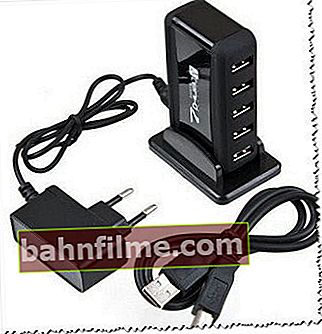
Powered USB Hub
- if we are talking about an external drive, try using either the above-suggested hub or a Y-cord (it allows you to connect a drive directly to 2 ports!).
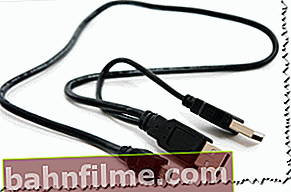
USB Y-cord for connecting an external HDD
*
That's it for now. Add-ons always come in handy ...
Happy work!
✌


